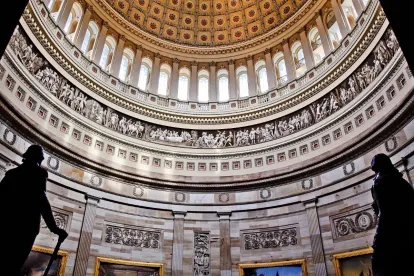Earlier today, the House of Representatives passed the Inflation Reduction Act of 2022 (the “Act”), which the Senate passed on August 7, 2022. President Biden has indicated that he will sign the Act into law.
The Act substantially changes and expands existing federal income tax benefits for renewable energy, including the existing Section 45 production tax credit (“PTC”) and Section 48 investment tax credit (“ITC”), and adds Section 45Y, the Clean Energy Production Tax Credit, and Section 48E, the Clean Electricity Investment Credit to the Internal Revenue Code. Combined, these provisions would, in effect, extend the ITC and PTC at their full credit rates for eligible facilities on which construction begins before 2034. The Act also includes direct-pay options for certain taxpayers, and permits most taxpayers to sell certain tax credits. These changes are discussed below.
The Act also contains other noteworthy changes, including expansions and amendments to the existing Section 45Q carbon oxide sequestration credit, the Section 30D clean vehicle credit, and credits for homeowners adding certain renewable energy and efficiency improvements to their homes, as well as new provisions aimed at mitigating the effects of climate change, such as a new clean hydrogen production credit. We will cover other changes in forthcoming blog posts.
Section 45: Production Tax Credit
The Act extends the current PTC framework for qualified facilities that begin construction prior to January 1, 2025, but (as with the ITC) implements a new structure with a “base credit amount” and “increased credit amount.” The base credit amount and increased credit amount, along with the requirements that must be satisfied to qualify for the increased credit amount, are described in detail below. Qualified facilities include wind, closed and open loop biomass, geothermal, landfill gas, trash, qualified hydropower, marine and hydrokinetic facilities, but note the base credit amount is reduced by one-half for open-loop biomass facilities, small irrigation power facilities, landfill gas facilities and trash facilities. Additionally, the Act reinstates the PTC for solar energy facilities, which were last eligible for the PTC if placed in service before 2006. Taxpayers that own qualified facilities are eligible for the PTC for electricity produced and sold during the 10-year period beginning on the date the facility was originally placed in service.
Determination of Credit Amount
Taxpayers are eligible for the increased credit amount, currently 2.6 cents per kWh of electricity produced and sold in 2022 (and subject to inflationary adjustments for future years), if construction of the facility begins prior to the date that is 60 days after the IRS releases guidance regarding the prevailing wage and apprenticeship requirements described below (such date, the “Act Beginning Construction Deadline”). As such, any facility that has already been placed in service this year or has yet to be placed in service may now qualify for the full increased credit amount if construction began on such facility prior to the Act Beginning Construction Deadline, including facilities intended to qualify for 60% of the full credit amount by beginning construction in 2020 or 2021. For facilities that were placed in service prior to January 1, 2022, the historical PTC phase-outs remain intact.
Facilities on which construction begins after the Act Beginning Construction Deadline will be eligible for the increased credit amount only if one of the following is satisfied:
-
The facility has a maximum net output of less than 1 MW(AC), or
-
Newly enacted prevailing wage and apprenticeship requirements are satisfied.
As such, once the Act Beginning Construction Deadline has passed, facilities larger than 1 MW(AC) that have not yet begun construction must satisfy the prevailing wage and apprenticeship requirements to be eligible for the increased credit amount of 2.6 cents per kWh for 2022 (which is increased for inflationary adjustments for future years).
To satisfy the prevailing wage requirement, laborers, mechanics, contractors and subcontractors must be paid wages at least at prevailing rates, which are determined by the Secretary of Labor, during the construction, alteration and repair of the facility and for ten years thereafter. If not satisfied, this can be corrected if any individual not paid a prevailing wage is paid the difference, with interest, and a penalty of $5,000 per impacted individual is paid to the Secretary of Labor. This penalty is increased if the prevailing wage requirements are intentionally disregarded.
To satisfy the apprenticeship requirement, the following percentage of total labor hours for construction, alteration or repair work on the qualified facility must be performed by qualified apprentices:
|
Construction Begins |
Before 1/1/2023 |
During 2023 |
After 1/1/2024 |
|
Required Percentage |
10% |
12.5% |
15% |
Further, taxpayers must comply with the apprentice-to-journeyworker ratios of the Department of Labor or the applicable state and there must be one apprentice for each taxpayer, contractor, or subcontractor that employs four or more individuals to construct, alter, or repair the facility. However, the apprenticeship requirement will still be satisfied if the taxpayer makes a good faith effort to comply based on specific standards set forth in the Act, or pays a penalty to the Secretary of Treasury of $50 multiplied by the total labor hours not in compliance with this requirement. Like the prevailing wage requirement, if the apprenticeship requirement is intentionally disregarded, then the penalty increases.
Bonus Credit Amounts
Under the Act, there are opportunities to increase the credit amount for certain facilities that are placed in service after December 31, 2022.
The credit amount is increased by 10% if certain domestic content requirements are satisfied. The domestic content requirement is satisfied if (i) 100% of any steel or iron that is a component of the facility was produced in the United States, and (ii) 40% of manufactured products that are components of the facility were produced in the United States. For manufactured products, such products will be deemed to have been produced in the United States if not less than 40% of the total costs across all such manufactured products of such facility are attributable to manufactured products that are mined, produced or manufactured in the United States. Note, the required percentage of domestic manufactured products for offshore wind facilities is 20%.
Finally, if the facility is located in an “energy community,” the credit amount is increased by 10%. To qualify, a facility must be located at one of the following: (i) a brownfield site, (ii) a metropolitan or non-metropolitan statistical area which (A) has, or had any time during the period beginning in 2010, 0.17% or more direct employment or 25% or more local tax revenues, in either case related to the extraction, processing, transport, or storage of coal, oil or natural gas, or (B) has an unemployment rate above the national average for the previous year, or (iii) a census tract, or a census tract that is adjoining to, in which a coal mine has closed after 1999 or a coal-fired electric generating unit was retired after 2009.
Section 48: Investment Tax Credit
As with the PTC, the Act extends the current framework for the ITC for qualified facilities that begin construction prior to January 1, 2025 and implements a similar base credit and increased credit structure. Qualified facilities include solar, fiber-optic solar, qualified fuel cell, qualified microturbine, combined heat and power system, qualified small wind, and waste energy recovery properties. The Act also permits taxpayers to claim the ITC with respect to several additional technologies, including standalone energy storage, qualified biogas property, fuel cells using electromechanical processes, dynamic glass, and microgrid controllers. The election to claim the ITC in lieu of the PTC for otherwise eligible PTC facilities is retained.
Determination of Credit and Increased Credit Amounts
In a credit structure similar to the PTC, the ITC for eligible projects is 30% if construction of the facility begins prior to the Act Beginning of Construction Deadline. As such, any facility that has been placed in service in 2022 or has yet to be placed in service may now qualify for the 30% ITC if construction of such facility began prior to the Act Beginning Construction Deadline, including facilities originally intended to qualify for the 26% ITC by beginning construction in 2020, 2021, or 2022. For facilities that were placed in service prior to January 1, 2022, the historical ITC phase-downs remain intact.
Facilities on which construction begins after the Act Beginning Construction Deadline will be eligible for the 30% ITC only if one of the following is satisfied:
-
The facility has a maximum net output of less than 1 MW (AC), or
-
Newly enacted prevailing wage and apprenticeship requirements are satisfied.
As such, once the Act Beginning Construction Deadline has passed, facilities larger than 1 MW (AC) that have not yet begun construction must satisfy the prevailing wage and apprenticeship requirements to be eligible for the 30% ITC; otherwise, the ITC percentage defaults to the base credit amount of 6%.
The prevailing wage and apprenticeship requirements are essentially the same as set forth above for the PTC, except that the prevailing wage requirement applies for a period of five years after the facility has been placed in service, rather than ten. If the prevailing wage and apprenticeship requirements are satisfied with respect to any eligible facility, the taxpayer would be eligible to claim the 30% ITC. As with the PTC, the credit is increased by 10% if the domestic content requirement is satisfied, and 10% if the facility is located in an energy community, increasing the ITC credit rate to 50% in some circumstances. However, the domestic content adder is only 2% (rather than 10%), and the energy community adder is only 2% (rather than 10%) if both construction of the facility begins after the Act Beginning Construction Deadline and the prevailing wage and apprenticeship requirements are not satisfied,.
Finally, wind and solar facilities that are less than 5 MW (AC) and placed in service in certain low-income communities beginning in 2023 may be eligible for an ITC credit increase of 10%.
Standalone Tax Credit for Storage
As referenced above, the Act adds standalone energy storage projects as qualifying facilities eligible for the ITC. Storage is defined as (i) property (other than property primarily used in the transportation of goods or individuals and not for the production of electricity) which receives, stores, and delivers energy for conversion to electricity (or, in the case of hydrogen, which stores energy), and has a nameplate capacity of not less than 5 kWh, or (ii) thermal energy storage property. Thermal energy property does not include a swimming pool, combined heat and power system property, or a building or its structural components. Further, any storage property that was placed in service prior to the date of enactment of the Act and has a capacity of less than 5 kWh may be later modified to have a capacity of at least 5 kWh to be treated as a qualified facility for purposes of the ITC. Only the basis of the modified property will be taken into account, but preexisting property prior to the modification will not.
New Sections 45Y and 48E
The Act adds two new sections, Section 45Y, the Clean Energy Production Tax Credit, and Section 48E, the Clean Electricity Investment Credit. These credits apply to any qualified facility or energy storage facility (in the case of the Section 48E credit) that is used for the generation of electricity, which is placed in service on or after January 1, 2025 and has an anticipated greenhouse gas emissions rate of not more than zero. Qualified facilities also include any additions of capacity that are placed in service on or after January 1, 2025. Sections 45Y and 48E are intended to be technology neutral and replace the PTC and ITC for facilities placed in service on or after January 1, 2025. Although these sections eventually replace the PTC and ITC, the credits determined under Sections 45Y and 48E will mirror the PTC and the ITC for wind and solar facilities.
The credit amount for each is generally calculated in the same manner as the ITC or PTC, as applicable. The credit amount is phased out based on when the facility begins construction after the “applicable year.” Under Section 45Y and 48E, the applicable year means the later of (i) the calendar year in which the annual greenhouse gas emissions from the production of electricity in the United States are reduced by 75% from 2022 levels, or (ii) 2032 (such year, the “Applicable Year”). The credit is phased out in the following percentages:
|
Year After Applicable Year in Which Construction Begins |
First |
Second |
Third |
Thereafter |
|
Percent of Credit Remaining |
100% |
75% |
50% |
0% |
The prevailing wage and apprenticeship requirements, and the optional credit increases for satisfying the domestic content requirement or constructing the facility in an energy community, are similar to those set forth above for the ITC and PTC, as applicable. However, the required percentage of domestic content included in a facility increases each year, as follows:
|
Construction Begins |
Before 1/1/2025 |
2025 |
2026 |
2027 and After |
|
Required Percentage |
40%* |
45%* |
50%* |
55% |
*Note, these percentage differ slightly for offshore wind facilities.
Direct Pay Option and Transferring Credits
The Act allows tax credit recipients to monetize the credits in two new ways: via the direct pay option set forth in Section 6417 or by transferring all (or any portion of) the tax credit to another taxpayer under Section 6418.
Section 6417: Direct Pay Option
The Act allows certain entities, including tax-exempt entities, states and political subdivisions, the Tennessee Valley Authority, Alaska Native Corporations, and Indian tribal governments, to take direct pay equal to the amount of certain specified credits. This election is available for the PTC, if the applicable facility is placed in service after December 31, 2022, credits under Section 45Y, the ITC, credits under Section 48E, and several other credits. The election must be made no later than the due date for the tax return of the year in which the election is made (or a date determined by Treasury if the eligible entity is not required to file a return), but in no event earlier than 180 days after the enactment of Section 6418. For the PTC, the election applies to the 10-year period beginning on the date the facility is placed in service. The legislation includes provisions for how partnerships must process direct pay. For those that can qualify for direct pay, and with respect to certain credits, a facility loses its ability to qualify for 100% direct pay over time, absent meeting domestic content requirements.
Section 6418: Transfer of Credits
The Act allows taxpayers to transfer all (or any portion of) the ITC, PTC, Section 45Y credit, or Section 48E credit to another taxpayer under new Section 6418. The election to transfer must be made no later than the due date for the tax return of the year in which the credit is determined (or, for a transfer of the PTC or Section 45Y credit, for each taxable year during the 10-year period beginning on the date the facility is placed in service), but in no event earlier than 180 days after the enactment of Section 6418. Once made, the election is irrevocable.
To properly transfer, the transferee must pay for the credit in cash, and the buyer is not allowed to deduct the amount paid for such credit or subsequently transfer the credit. The payment will not be included in the gross income of the original recipient. A penalty for excessive transfers are imposed. An excessive transfer is a transfer of credit in excess of what the transferee could properly claim.





 />i
/>i
